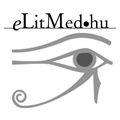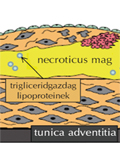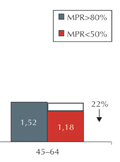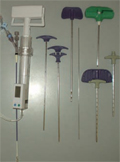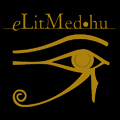The eLitMed.hu medical portal uses computer cookies for convenient operation. Detailed information can be found in the Cookie-policy.
LAM KID - 2011;1(01)
Content
[New findings in the cortical bone biology and its role in bone fractures]
[The authors surveyed the already known factors responsible for the osteoporotic bone fragility. Then the results of using modern imaging techniques (micro-CT, high-resolution peripheral computed quantitative tomograph - HR-pQCT) and advanced computer analytic methods (finite element analysis, FEA) are presented. These data - beyond the already known fracture risk factors (age, risk of falling, bone mineral density - BMD, and fine structure damage of trabecular bone) are stressing the importance of the (micro)damage of cortical bone as a fracture risk factor, which has been still underrated. The cortical thickening and increased porosity - verified on various population samples - are increasing the risk of fractures in certain subgroups of subjects having identical BMD values, even among those, who are considered only osteopenic by the earlier classification based on BMD values. Backed with modern software batteries, the new imaging techniques are expected to enter clinical application in the near future. Pharmacologic agents with stronger cortical effect are already available and research is continuing to find new drugs to use in the management of osteoporotic patients of high fracture risk.]
[New approaches to the treatment of osteoporosis]
[Osteoporosis is a significant health care problem, and its treatment is of major interest. Despite of the wide spectrum of therapeutical modalities, the effective cure for all forms of this condition has not yet been developed. For this reason, the focus is on the development of new pharmacological approaches. The RANK/RANKL/OPG system discovered one and a half decades ago provides a tool for the neutralization of the osteoclast-stimulating RANKL by the use of monoclonal antibodies. Catepsin-K inhibitors offer another pathway for the inhibition of bone degradation. Anti-sclerostin and anti-Dkk-1 antibodies may stimulate bone formation by the release of Wnt signal transduction system. Other administration methods for PTH analogs, new generations of selective estrogen receptor modulators and antibodies against vitronectin receptors as well as potential new drug targets will enable us to fight bone loss more efficiently.]
[Calcium supplementation and the risk of cardiovascular disease - Real apprehension or picking the spin?]
[Some data shows that calcium supplementation, a basic intervention for treating osteoporosis in postmenopausal women, may increase the risk of atherosclerotic vascular disease. Coronary artery calcified plaque is a marker for atheromatous plaque burden and predicts future risk of cardiovascular events. However, the deposition of calcium into the vascular wall is due to an active mechanism, involving such genes and proteins which play role in bone metabolism. In this work the data about the cardiovascular side effect of calcium supplementation are reviewed. Also, I demonstrate studies with the conclusions that calcium supplements with or without vitamin D do not increase the risk of cardiovascular events, especially that of myocardial infarction.]
[The concept of adherence and its significance in osteoporosis]
[Today, in relation to the economical aspects of medical therapies, the patterns of patients’ drug taking have come into focus. One of the important indicators is adherence, which consists of four different concepts concerning faithfulness to therapy: acceptance, concordance, persistance and compliance. In chronic diesases, medical therapy without a certain degree of adherence is no more useful than no therapy at all. A number of international clinical studies show that in osteoporosis, the therapy can only lead to a decrease in the number of fracture in case of sufficient adherence.]
[Vertebroplasty and kyphoplasty in the clinical practice]
[Osteoporosis affects about 600 thousand women and 300 thousand men in Hungary. The fractures give the illness its significance, among them 30-40 thousand vertebral fractures occur annually. One fifth of the patients suffering from vertebral compression fracture (VCF) sustaines an other VCF within a year. The intense pain can not always be controlled under conservative care and an efficient and fast intervention is needed to restore the quality of life of the patients. The cement augmentation (vertebroplasty or kyphoplasty) may help in days. The authors wish to present for the colleagues the details of indication, technical questions of the procedures and their complications based upon the data of numerous operated cases. They emphasize that osteoporotic patients sustained a VCF need complex care and nurture. They also mention that the danger of fracture of a neighbouring vertebra is increased due to the rigidity of the cemented one.]
1.
Clinical Neuroscience
[Headache registry in Szeged: Experiences regarding to migraine patients]2.
Clinical Neuroscience
[The new target population of stroke awareness campaign: Kindergarten students ]3.
Clinical Neuroscience
Is there any difference in mortality rates of atrial fibrillation detected before or after ischemic stroke?4.
Clinical Neuroscience
Factors influencing the level of stigma in Parkinson’s disease in western Turkey5.
Clinical Neuroscience
[The effects of demographic and clinical factors on the severity of poststroke aphasia]1.
2.
3.
4.
5.
